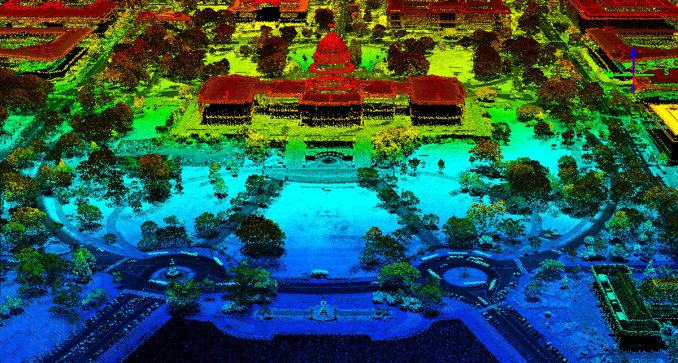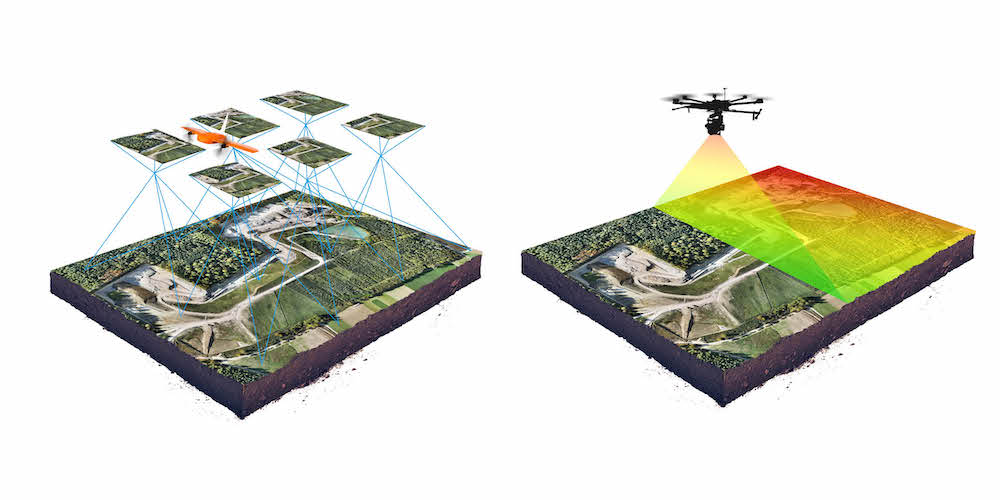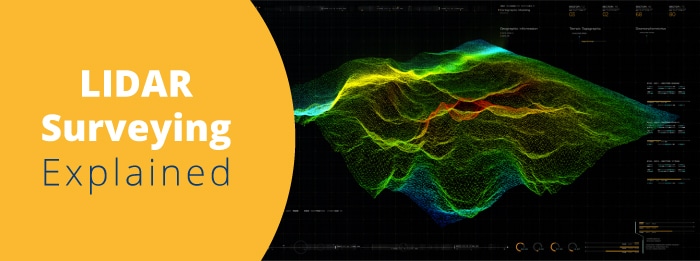A Finite Element FE feature for matching individual cables inside the model to actual LiDAR points allows for a comprehensive analysis of the entire line. Continuous acquisition is possible.

Lidar Technology In The Archaeology Industry
Lidar systems provide better range and a large field of view which helps detecting obstacles on the curves.

. Drone geophysics has the same advantages over conventional aircraft such as low acquisition cost and rapid deployment. Surface data has a higher sample density. One of the main advantages being the generation of sample points with polar geometry versus the perspective geometry obtained by aerial photography.
LIDAR has a distinct advantage here because even though aerial photography may also reveal holes in the canopy the photogrammetric process requires that the same ground point be visible in two overlapping photographs in order to measure the ground elevation. Mounted on a multi-copter point density and the resulting point cloud accuracy can be improved by flying low and slow at the expense of reduced efficiency. LiDAR pulses target surface data which has a higher sample density.
This is a chief advantage of using LiDAR instead of other remote sensing tools. Its development should provide a guide to city and county administrators and photogrammetric engineers alike in planning surveys based on aerial photography and should encourage the more exten sive use of aerial survey methods in day-to-dayadministration. Aerial LiDAR surveys have become a mainstay on most worksites in mining oil gas and heavy construction.
LiDAR is cutting edge technology that utilizes an airborne global positioning system GPS and scanning instruments to produce accurate digital surfaces of the ground and vegetation. Lidar data does not require aerial triangulation and orthorectification because all the measurements are individually georeferenced by means of a differential GPS. Additionally unlike aerial cameras requiring cloudless conditions LiDAR sensors can operate in the dark under clouds or in other conditions.
Potential karst features can be identified and indistinct or otherwise suspicious points targeted for field verification. By flying lower lightweight UAV LIDAR provides a higher point density than manned aerial LIDAR and can achieve better accuracy even though the laser is less powerful. Because it is easy to deploy project lead-time is reduced.
The application of aerial tools allows mapping across large areas. LiDAR is extremely cost effective for these purposes. Unfortunately this doesnt provide an actual representation of the entire line span for span phase for phase.
Because the LiDAR penetrates the foliage canopy it is also useful for areas of archeological interest and can reveal surface details that would be hidden if using conventional aerial photography. Aerial and terrestrial LiDARs can be combined for improved efficiencies he said and the enhanced level of detail the technology offers can help improve communication on a work site. LiDAR uses laser pulses that travel at the speed of light and this enables it to collect data fast and accurately.
LIDAR provides archaeologists with these advantages over conventional aerial photography. By producing highly accurate elevation data through vegetation in the day or. Comparable data cannot be obtained by on-the-ground or conventional aerial photography.
Aerial Vs Satellite Remote Sensing Aerial Photography Taking aerial photographs of the Earths surface is a passive form of remote sensing generated from cameras mounted on aircraft satellites and other spacecraft. In the development stage drones offer unparalleled advantages to mining companies. LiDAR data do not require aerial triangulation and orthorectification because all the measurements are individually georeferenced by means of a differential GPS.
Prototype Long Range Geophysics Drone in 2012 PlanningPermitting. Laser scanning Laser Imaging Detection and Ranging LiDAR has the distinct advantage of requiring only a single ray to measure elevation New photo algorithms from robotic vision add many more images to the overlap region to enhance the probability of locating matching blunders. A few other companies have developed magnetometer drones in recent years too.
Flying LiDAR to create a 3-D model before beginning construction provides advantages said Matt Rosenbalm Microdrones sales manager for the southern US. LiDAR facilitates more accurate and detailed quantitative identification and mapping of mass wasting features than any other method. The photographs are taken every 10 to 30 seconds as an aircraft follows a systematic overlapping flight pattern at a fixed.
One of the main advantages is the generation of sample points with polar geometry versus the perspective geometry obtained by aerial photography. Data can be collected quickly and with high accuracy. Coastal Projects LiDAR surveys are ideal for studying erosion movement monitoring of coastal slopes.
This is one major advantage over RADAR systems which have a narrower field of view. This allows the LiDAR to scan through the vegetation in order to create a digital terrain model DTM even in. LiDAR offers many advantages over traditional mapping methods including high accuracy fast data collection and robust data sets that can be used for multiple purposes.
Analysis of the uses and limitations of aerial photography. Below are some of the advantages of LiDAR over Radar. A and b tree canopies can be eliminated by switches off the first return so the sensor can see.
Some LIDAR units can record multiple returns ie first pulse last pulse as well. The main advantages of the combination of a drone with LiDAR is the non-intrusive property of the operation combined to the ability to bypass all light difficulties. Historically cable sags are derived using ruling span calculations.
LiDAR is making improvements in terrain mapping and growing in popularity for hydrology geomorphology site planning landscape ecology and volumetric calculations. Data than conventional photogrammetry. This helps distinguish objects based on size and estimate the impact of driving over it.

A Complete Guide To Lidar Light Detection And Ranging Gis Geography

Drone Photogrammetry Vs Lidar What Sensor To Choose For A Given Application Wingtra

0 Comments